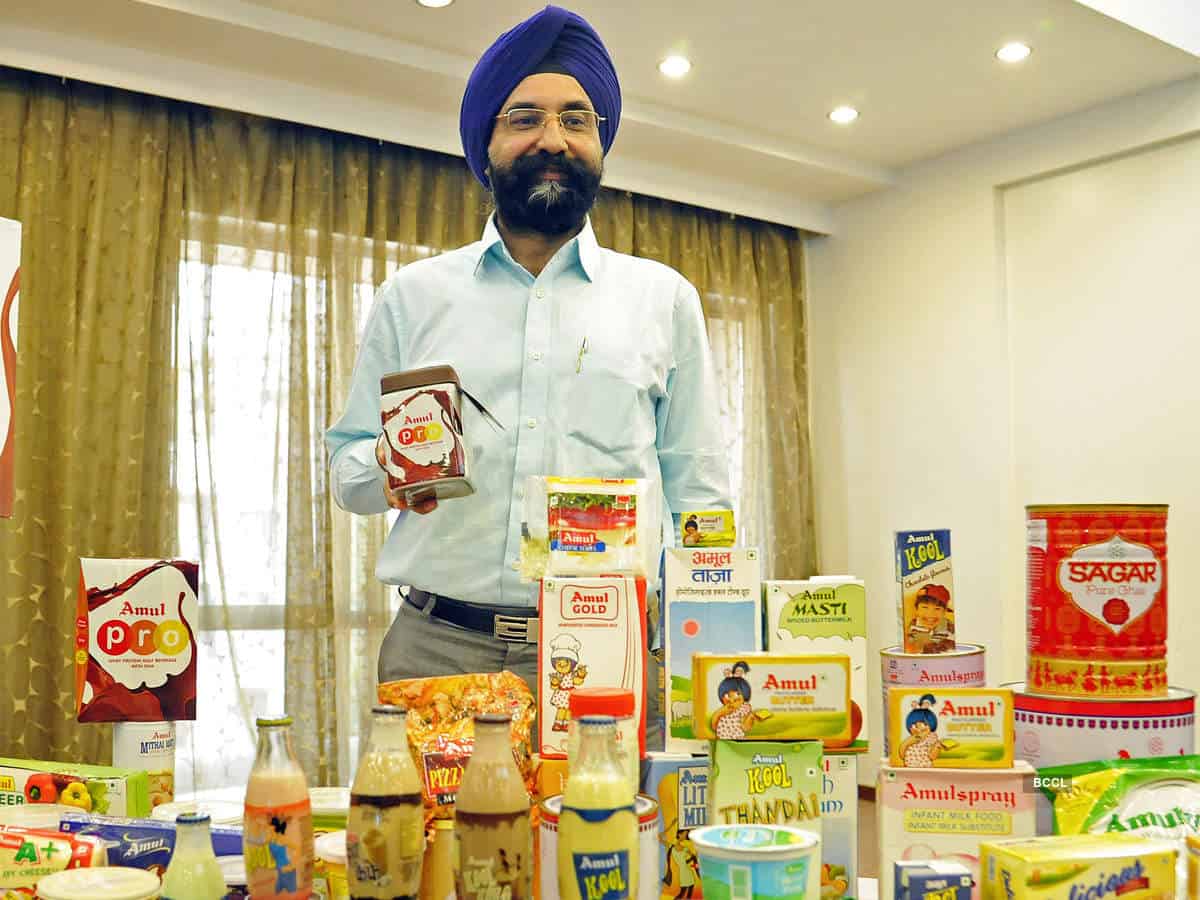Amul was incorporated to protect the interests of consumers and milk producers in India By Gujarat Cooperative Milk Marketing Federation Limited ( GCMMFL ).
Amul Stands For Anand Milk Union Limited is also known for starting the white revolution, encouraging local milk farmers to dream. This is what made them the largest producer of milk products.

Let us look into the Overview of Nestle and then we can move on to the BCG Matrix of Amul.
Content Outline
Overview Of Amul
Amul (The Kaira District Co-operative Milk Producers’ Union) is an Indian dairy cooperative based in Anand in the Indian state of Gujarat. It was established in 1946 and is a cooperative brand owned by a cooperative society, Gujarat Co-operative Milk Marketing Federation Ltd. (GCMMF), which is now jointly owned by 3.6 million (3.6 million) milk producers in Gujarat, and the apex body of 13 District Milk Unions spread across 13,000 villages in Gujarat. Amul has kick-started India’s White Revolution, which has made the country the world’s largest producer of milk and dairy products.
Kaira Union introduced the brand “Amul” to market its range of products. The word ‘Amul’ is derived from the Sanskrit word ‘Amulya’ which means ‘priceless’ or precious (a name suggested by the then Principal of Agriculture College, Dr Maganbhai Patel) and was established in 1946 through the efforts of Tribhuvanda’s Kishibhai Patel. The establishment of Amul made an important contribution to the white revolution in India.
Tribhuvandas Kishibhai Patel, under the leadership of Sardar Vallabhbhai Patel, became the founding chairman of the organization and headed it till his retirement in the 1970s. He hired Dr Verghese Kurien in the year 1949. He convinced Dr Kurien to stay on and help with the mission. Under Tribhuvanda’s chairmanship, Dr Kurien was initially the Director-General and helped direct Amul’s technical and marketing efforts. After the death of Tribhuvanda’s Kishibhai Patel in 1994, Dr Kurien briefly served as Amul’s chairman.
Kurien, who was the founding chairman of GCMMF for more than 30 years (1973-2006), is credited for the success of Amul’s marketing. Amul has ventured into overseas markets
What is BCG Matrix?
BCG growth-share matrix classifies different business units or products into 4 different categories like Dogs, Stars, Cash Cows and Question Mark.
These classifications are based on the growth rate of the industry and the market share of the respective businesses which are relative to the largest competitor present, for that reason, BCG Matrix is also called as Growth-Share Matrix
Also, Read the SWOT Analysis of Amul in a Simplified Way.
BCG Matrix of Amul
BCG Matrix of Amul contains the Dogs, Stars, Cash Cows, and the Question Mark. In this reading of the BCG Matrix of Amul, we will analyse the company’s low growth products, products that attract sales, high growth products, and products that may attract sales or may become low growth products in future.
Dogs
Dogs are products that have low growth or market share and have very little chance of becoming a profitable business for the company.
Amul chocolate, Amul cookies and Amul pizza are some products that can be considered as Dogs for Amul.
Due to the strong competition and limited innovation faced by these product categories, it is becoming increasingly difficult for Amul to gain market share for these products and make them a profitable source of revenue.
Stars
There are three products of Amul which fall under the category of a cash cow. The first is Amul milk, the second is Amul butter and the third is Amul cheese.
The products have a high market share in these not so fast-growing industries. Due to limited growth opportunities in the industry, Amul is introducing a number of new product variants for different customer segments to maintain its market leadership.
For example: Apart from the basic butter and milk, Amul has also launched Amul Butter Lite, Amul Tazza Milk and Amul Gold Milk to target customers who are more health-conscious
Cash Cows
There are three products of Amul which fall under the category of a cash cow. The first is Amul milk, the second is Amul butter and the third is Amul cheese.
The products have a high market share in these not so fast-growing industries.
Due to limited growth opportunities in the industry, Amul is introducing a number of new product variants for different customer segments to maintain its market leadership.
For example: Apart from the basic butter and milk, Amul has also launched Amul Butter Lite, Amul Tazza Milk and Amul Gold Milk to target customers who are more health-conscious
Question
Amul Lassi was launched with an aim to increase the market share and compete with the other drinks available in the market.
Considering the increasing interest and demand for healthy products and beverages, Amul healthy milk has a great potential to grow in the near future provided it is marketed well.